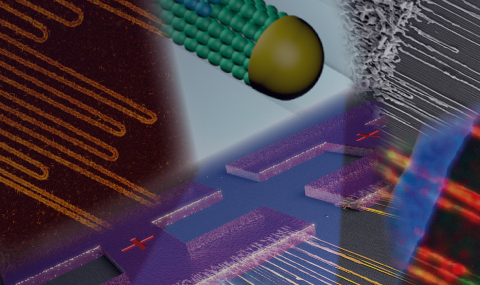
The simultaneous control of the orientation and position of organic semiconductor nanowires remains a major challenge when integrating them into monolithic devices. In this study, tris(8-hydroxyquinoline)aluminum(III) (Alq3) molecules are self-assembled into single-crystalline nanowires with consistent orientation and predictable positions by selective-area graphoepitaxial growth. The nanowire orientation is determined by parallel nanogrooves on a periodically modified faceted sapphire surface, and the position is simultaneously defined using a shadow mask. Computational fluid dynamics simulations showed that the mass flow field over the sapphire surface is tailored by the mask, resulting in preferential nanowire nucleation around the hole centers and leaving sufficient free space for the subsequent growth. Accordingly, the number, length, and density of the nanowires can be controlled by adjusting the mask layout. The good alignment and predictable positions of these nanowires facilitated their subsequent device integration, eliminating laborious assembly steps and potential damage after nanowire growth. Measurements from an in situ integrated two-terminal device based on the Alq3 nanowires revealed that the nanowires exhibit a remarkable negative differential resistance and fast photoresponse in the UV region. Overall, selective-area graphoepitaxial growth provides a versatile protocol for fabricating site- and orientation-controlled organic semiconductor nanowires for the monolithic fabrication of nanowire-based devices.


